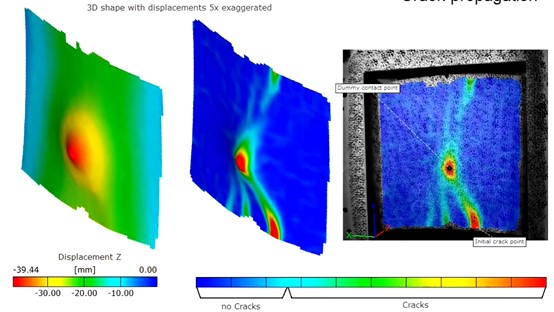High-speed cameras: Applications in Aerospace Testing
The article from Aerospace Testing International emphasizes the use of digital image correlation (DIC) in aerospace propulsion systems testing,...
1 min read
Ben Eisdorfer
:
February 1, 2024 10:32:19 AM EST
The pioneering 50-foot drop test of an eVTOL battery, a collaboration between Beta Technologies and Wichita State University’s National Institute for Aviation Research (NIAR), marks a significant milestone in aviation safety. This test, crucial for validating the crashworthiness of electric aircraft batteries, utilized ARAMIS Digital Image Correlation (DIC) system to monitor and analyze the structural integrity of the battery upon impact.
ARAMIS DIC, a non-invasive optical method, provided detailed insights into the deformation and strain distribution within the battery system during the drop. This technology was instrumental in demonstrating the battery's resilience, showing no significant damage at the cell or pack level. The successful outcome validates the robustness of eVTOL battery designs and supports the development of safety standards and certification processes for electric aircraft.
Furthermore, the data gathered through DIC enhances simulation modeling methods, allowing for more accurate predictions of battery behavior under extreme conditions. This advancement not only bolsters the reliability of eVTOL aircraft but also paves the way for future innovations in electric aviation safety.
The incorporation of ARAMIS optical DIC testing system in battery drop testing is a testament to the evolving landscape of aviation technology, where precision and safety are paramount. This test serves as a foundation for further research and development, ensuring that the eVTOL industry progresses with the highest safety standards in mind.
ARAMIS DIC is not only being used on large-scale battery measurements, but also small device battery measurements. Learn more here.
The article from Aerospace Testing International emphasizes the use of digital image correlation (DIC) in aerospace propulsion systems testing,...
ABSTRACT

ABSTRACT